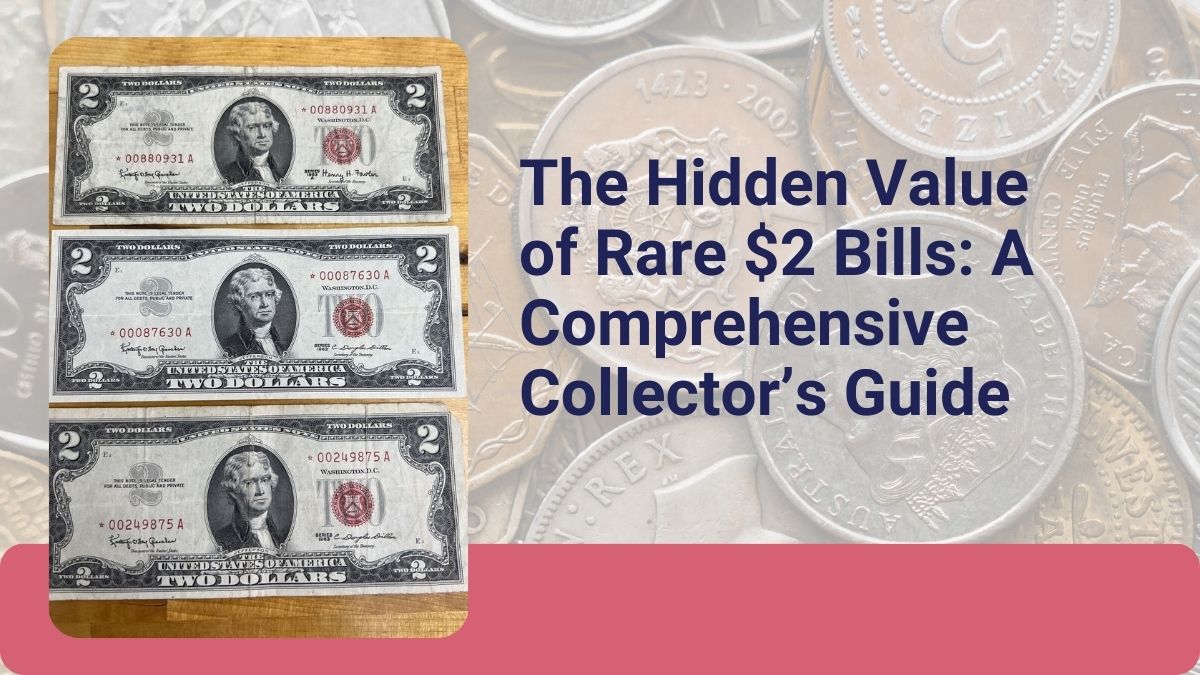The $2 bill is often considered an underdog in the world of currency collecting, yet these unique notes can be worth far more than their face value.
This comprehensive guide delves into the secrets of rare $2 bills, including what makes them valuable, how to identify rare editions, and the key factors that collectors look for.
Understanding the History of the $2 Bill
The $2 bill was first issued in 1862 as part of the United States Treasury’s effort to fund the Civil War. Over the years, several different series of $2 bills have been printed, each with unique features that contribute to their collectible value.
The large-sized notes printed before 1928 are particularly rare and can be worth hundreds or even thousands of dollars.
Factors That Influence the Value of $2 Bills
Several factors can significantly influence the value of $2 bills. Below are the key attributes that collectors consider:
- Series and Date: The series of a $2 bill is a critical factor. For example, notes from Series 1928 or earlier are typically valued higher, especially in uncirculated condition. Series 1953 and 1963 notes are also sought after but command lower prices.
- Seal Color: $2 bills with red, blue, or brown seals are more valuable. Bills with a red seal, issued between 1862 and 1917, can fetch anywhere from $300 to over $2,500 depending on their condition.
- Star Notes: These bills have a small star next to the serial number, indicating they were printed as replacements for defective notes. Star Notes from smaller print runs (640,000 or fewer) are particularly rare and can be worth significantly more.
- Serial Numbers: Unique or “fancy” serial numbers, such as those that have repeating digits or patterns (e.g., 00000001, 12345678), can substantially increase a bill’s value.
- Errors: Printing errors, such as misalignments or incorrect serial numbers, can make a $2 bill extraordinarily valuable. Error notes are highly sought after by collectors.
Rare $2 Bills Worth Noting
Certain $2 bills have gained notoriety for their high auction prices. Here are some examples of rare and valuable $2 bills:
| Type of $2 Bill | Value Range | Features |
|---|---|---|
| Large-Size Notes (1862-1928) | $500 – $10,000+ | Larger format, red/brown/blue seals |
| Red Seal (1928-1966) | $10 – $2,500 | Red seal, older series, often in demand |
| Star Notes | $5 – $50+ | Star next to serial number |
| Fancy Serial Numbers | $20 – $20,000+ | Repeating, low, or ladder serial numbers |
| Printing Errors | $100 – $5,000+ | Misprints, misalignments, rare features |
Recent High-Value Sales
Recently, a 2003 $2 bill with a very low serial number sold for $2,400 and was later resold for $4,000. Another notable sale involved an uncirculated 1976 $2 bill, which was valued at $20,000 due to its unique serial number and pristine condition.
Such high prices demonstrate that even modern $2 bills can have significant collectible value under the right circumstances.
Tips for Collectors
- Check the Condition: The condition of the bill is paramount. Uncirculated bills, which have not been handled or circulated, are always more valuable than their circulated counterparts.
- Verify Authenticity: Be aware that older $2 bills may look suspicious to the untrained eye. For example, a Series 1953 $2 bill could be mistaken for counterfeit due to its unconventional appearance. Always verify authenticity through reputable sources.
- Get an Appraisal: If you believe you have a valuable $2 bill, consider getting it appraised by a currency expert. This will provide you with a better understanding of its worth.
Conclusion
$2 bills are a fascinating area of currency collecting, with values that can range from face value to tens of thousands of dollars depending on the rarity and condition.
Whether you have a modern star note or an antique large-size note, understanding what makes these bills valuable is the key to unlocking their potential worth. Always do your research and, if in doubt, consult a currency expert.
FAQs
Yes, the Bureau of Engraving and Printing continues to print $2 bills, but they are not as widely circulated as other denominations.
Older $2 bills, especially those from the large-size series before 1928, are rarer due to limited production and high attrition over time.
Check the series date, seal color, condition, and serial number. Star notes and printing errors are also indicators of higher value.
Rare $2 bills can be sold at currency auctions, to collectors, or through online marketplaces like eBay.
A rare 1890 $2 Treasury Note, known as the “Grand Watermelon” note, sold for over $3.2 million at auction, making it one of the most expensive U.S. currency notes ever sold.
References
- PCGS, “What’s My $2 Bill Worth? Why Are $2 Bills So Rare?” (2024)
- Best Life, “$2 Bills Could Be Worth Thousands Now—What to Look For” (2023)
- 12news.com, “Got a $2 bill? It could be worth thousands” (2023)
